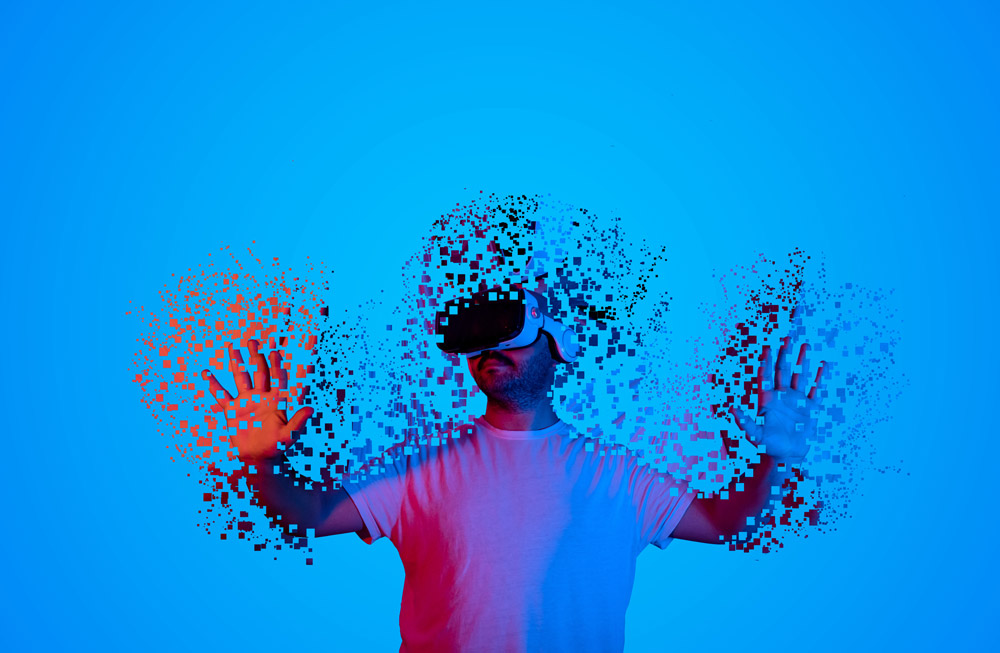If you have your finger on the pulse of social media, you probably heard about Facebook recently rebranding as Meta. It’s the company’s way of building upon the concept of a Metaverse, which will allow people to connect online in new ways.
But what, exactly, is the Metaverse? Why do we need new ways of interacting on social media platforms? Facebook is still Facebook, and the brand’s name change doesn’t affect the platforms owned by the company (Instagram, WhatsApp, and Oculus Virtual Reality); these still offer the same functions as before, including social networking, digital marketing, and photo sharing. But it’s Facebook CEO Mark Zuckerberg’s intent to dive deeper into a digital world of virtual interaction.
Is Facebook the Metaverse?
Despite the name change, Facebook isn’t the Metaverse itself. It’s just trying to integrate itself as part of the Metaverse, which can be described as a Sims-style way of living a virtual, three-dimensional life that mirrors your real life.
The Metaverse Isn’t New
The Metaverse definitely isn’t a new concept. Virtual reality (VR) has existed for decades. There are home gaming systems that allow users to experience VR in their living rooms, and venues such as The Disneyland Resort have VR attractions in the Downtown Disney shopping district. Popular games today, such as Roblox, World of Warcraft, and Fortnight allow users to create avatars and chat in real-time with other players. During times of social distancing, these Metaverse interactions gave users of all ages an opportunity to stay in touch.
The term “metaverse” was introduced in the 1990s and was a primary concept in the 1994 novel Snow Crash written by Neal Stephenson. This science fiction novel features a protagonist who lives in a virtual world referred to as the Metaverse.
Perhaps in part due to the Covid-19 pandemic, living in a digital world has gained mainstream popularity. The concept of a Metaverse isn’t just for hardcore, so-called nerds; when we were prevented from seeing loved ones in person, meeting virtually became a practical substitute. And we’re not just talking Google Meet, Zoom, or FaceTime. The Metaverse involves using an avatar to represent oneself in digital environments.
Elements of the Metaverse
Avatar
A digital version of yourself in a virtual world.
Digital Twin
A digital version of an object in a virtual world.
Mirrorworld
A digital rendering of real-life elements, such as people, homes, buildings, or cities. The entire mirror world could mimic the real world or just certain parts of it.
Skeuomorphic Design
Digital renderings of objects closely resemble their real-world counterparts without being identical twins.
Virtual Reality vs Augmented Reality
What’s the difference between virtual reality (VR) and augmented reality (AR)? In a virtual world, you are immersed in the surroundings. You put on the headset and feel transported to the new place. Augmented reality means that the real world is slightly altered; Pokemon Go is a prime example, in which digital elements are seen as overlays on a screen with the real world as a background.
Cryptocurrency and the Metaverse
If you can have an avatar in the Metaverse, you’ve got to have ways to customize it and grow its wealth. That’s where cryptocurrency and non-fungible tokens (NFTs) come into play. Virtual currency is purchased using real money and it can fluctuate in value. Cryptocurrency can be used as an investment, or to purchase goods and services online in a secure way. It makes sense that in a world of digital marketing, there would be digital currency to provide both real-world and virtual exchanges for goods and services.
The Metaverse Isn’t Just for Kids
Although there are many references to the Metaverse as a platform for virtual gaming or parties for kids, it can offer practical solutions for adults as well. For example, VR can create an uncluttered home office via a headset. Instead of having a desk weighted with monitors and cords, a work-from-home employee can slip on a VR headset and have all the screens they need. And not to get even more meta in the Metaverse, but popular TV character Dwight Shrute from The Office creates a virtual world for himself via the game Second Life, in which his avatar closely resembles himself in appearance as well as hobbies.
Monetizing the Metaverse
Developers of virtual worlds aren’t the only ones making money. People who design upgrades for avatars can make a living selling them to players. Whether you want to customize your avatar’s outfit, “adopt” a pet or purchase a virtual version of your favorite accessory, someone out there gets to design them and get paid for it. It all goes toward enriching the Metaverse experience, either allowing it to mirror a user’s real life, or serve as an escape into a life they dream of having.
Into the Unknown
What it comes down to is that the Metaverse is a conglomerate of different aspects of the Internet, providing an immersive experience for work or play. There’s still a bit of work yet to be done, however, before the Metaverse is a seamless experience. It currently involves wearing cumbersome VR headsets, or VR glasses that don’t have the same capabilities as the clunky headgear. Many question how the Metaverse is any different than VR experiences we currently have and some of those clarifications have yet to be seen. Perhaps the shift is from becoming friends with people in your online world to already being friends in the first place and opting to meet virtually instead of in person.
The Metaverse could change the landscape of digital marketing, offering consumers immersive exposure to products before they commit to purchasing. At Gravitate One, we don’t yet know the reach the Metaverse will have since, as a concept, it’s still being developed. Regardless of which direction that Metaverse takes, trust that your local Utah marketing firm will be along for the virtual ride.
